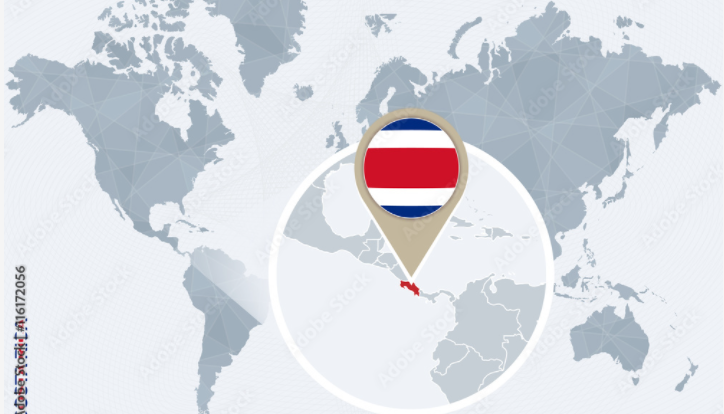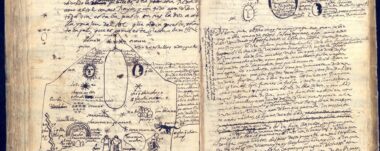Costa Rica: The Origins of the Name

Costa Rica is a Central American country rich in ecology and culture, in addition to having experienced a diverse range of historical events in which it has been a protagonist and co-protagonist with other countries. It is also a nation characterized by its famous expressions: Pura Vida, Tuanis and Mae; including, the colloquial name used to refer to its inhabitants, tico or tica. However, where does its name come from? Why is Costa Rica called Costa Rica? Who is responsible for this country’s name?
Before it was “The Rich Coast”
To answer the above questions it is important to understand that the current territory of the country did not have this name during the pre-Columbian period , as it was given by the Spanish colonizers of the XVI century and its inhabitants were not Costa Ricans, but some of its native peoples were the Huetares, the Borucas, the Chorotegas, the Cabécares, among others. It was not until 1502 A.D. that Christopher Columbus on his fourth voyage to the West Indies (as the American continent was known at that time) reached a coast, which belongs to the current territory of the province of Limón, specifically Uvita Island. When Columbus settled in the area of Cariaí, he had a peaceful contact with the curious natives of that region, who had no idea of the intentions of those striking foreigners who were visiting their lands for the first time. Although Columbus did not come to colonize, his mission was merely exploratory, he was very violent in the process.
“… it is important to understand that the current territory of the country did not have this name during the pre-Columbian period, as it was given by the Spanish colonizers of the 16th century” and “Christopher Columbus died in 1506, and it was not until 1539 that this territory officially began to be called Costa Rica.”
The process to come to be called “Costa Rica”
To better understand the origin of the name of the current country, it should be clarified that, like most in general history, it was a process and not something episodic, much less a matter that happened overnight, but rather a gradual matter to get to the official name. In short, it is necessary to understand the difference between conquest and colony, since the first consists of plundering, and the second of institutionalization; particularly for Costa Rica, its first encounter with the Spanish was in 1502, its conquest (specifically in the Central Valley) was from 1560 to 1574, and its time as a colony was from 1574 to 1821, the year in which it decided to become independent from the Spanish Empire. As an additional fact, the area of Talamanca was never conquered, although several attempts were made to subjugate indigenous people and found cities, such as Santiago. This area presented constant resistance to the Spanish. It is because of this that the present Talamanca, among other aspects, is characterized by retaining a population of indigenous people.
The myth that Columbus was the one who gave the name to the area
There is a popular belief that it was Christopher Columbus who gave this name to this territory in 1502; however, the term Costa Rica was not a name in itself, but a simple way to refer to these lands, therefore it is officially improper to attribute to Columbus the initiative of the name, since it was thought to be rich in gold, when in fact it was one of the poorest provinces in the kingdom of Guatemala. Do not misunderstand, there was gold in Costa Rica, but this mineral was not abundant.
It is due to the above that this territory took several years to be conquered and colonized after the first contact with the Europeans, since there were other territories with higher priority for the Spaniards; it was not until due to diseases such as smallpox and measles, and in addition to the forced labor that the indigenous population was forced to do, that this population began to dwindle, therefore it was a motivating reason to conquer the central valley to make use of its indigenous people.
Christopher Columbus died in 1506, and it was not until 1539 that this territory officially began to be called Costa Rica. Hernán Sánchez de Badajoz was the one who, through official documents, alluded to this territory with the name of Costa Rica, no longer as a simple reference, but as a proper name; therefore, the neighbors of the cities founded in this province were called “los costarricas”, because the term “costarricenses” (current gentilic) did not exist in colonial times.
“Hernán Sánchez de Badajoz was the one who through official documents alludes to this territory with the name of Costa Rica, no longer as a simple reference, but as a proper name…”
Three names
This isthmic territory went through three different names in a context in which the conquistadors disputed the lands of this place: Costa Rica and Veragua, which was used by those who came from Panama or Castilla del oro; Costa Rica and El Desaguadero, likewise used by those who came from Nicaragua, as in the case of Hernando Contreras; and Costa Rica and Nuevo Cartago, whose use was common by the conquistadors who came from Spain. It was not until the 1570’s that the term “Costa Rica” was used, separated from Nuevo Cartago.
In conclusion, this country has gone through a whole process not only in diplomatic, commercial, economic or state aspects, but it has been evidenced that even the name reflects a series of changes that have contributed to both the identity and the history of a territory.
In short!
It is erroneously believed that Christopher Columbus named to Costa Rica but it was really Hernan Sanchez de Badajoz.
In the beginning the “Ticos” were called the “Costarricas”.
The country had several names: “Costa Rica and Veragua”, “Costa Rica and the Desaguadero”, Costa Rica and the New Carthage”.
Bibliography
Fernández Guardia, Ricardo. History of Costa Rica. El descubrimiento y la conquista. San José: Librería LEHMANN & CIA, 1941.
Villavicencio, Enrique. Republic of Costa Rica. History.- Geography.- Mineral kingdom.- Vegetable kingdom.- Animal kingdom.- Population.- Public instruction.- Army.- Industries.- Commerce.- Roads of communication.- Revenues.- Expenditures.- Debt. Texas: The Library of the University of Texas, 1886.
AUTHOR: Enoc Enmanuel Salazar Lezama
Student of History, University of Costa Rica
E-mail: [email protected]
October 2021
Navigate articles






